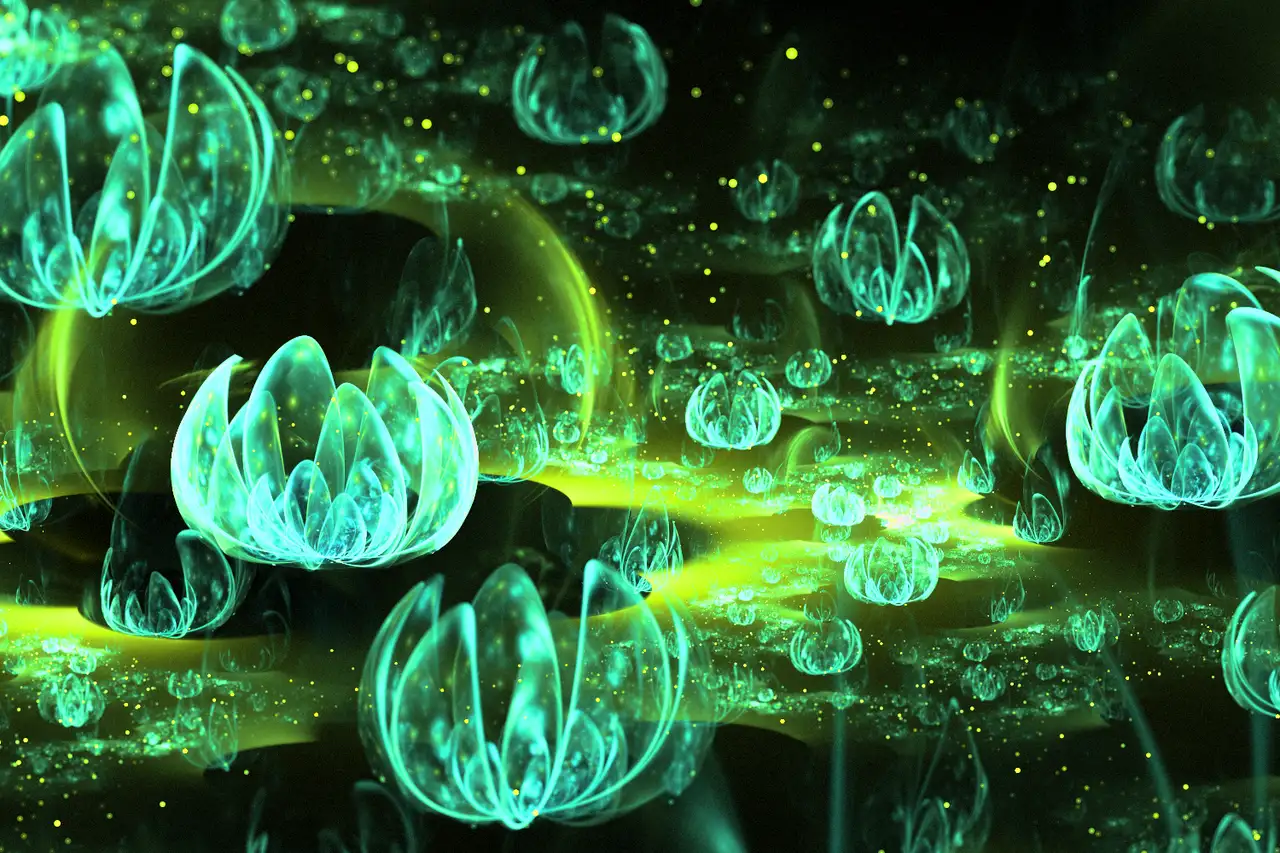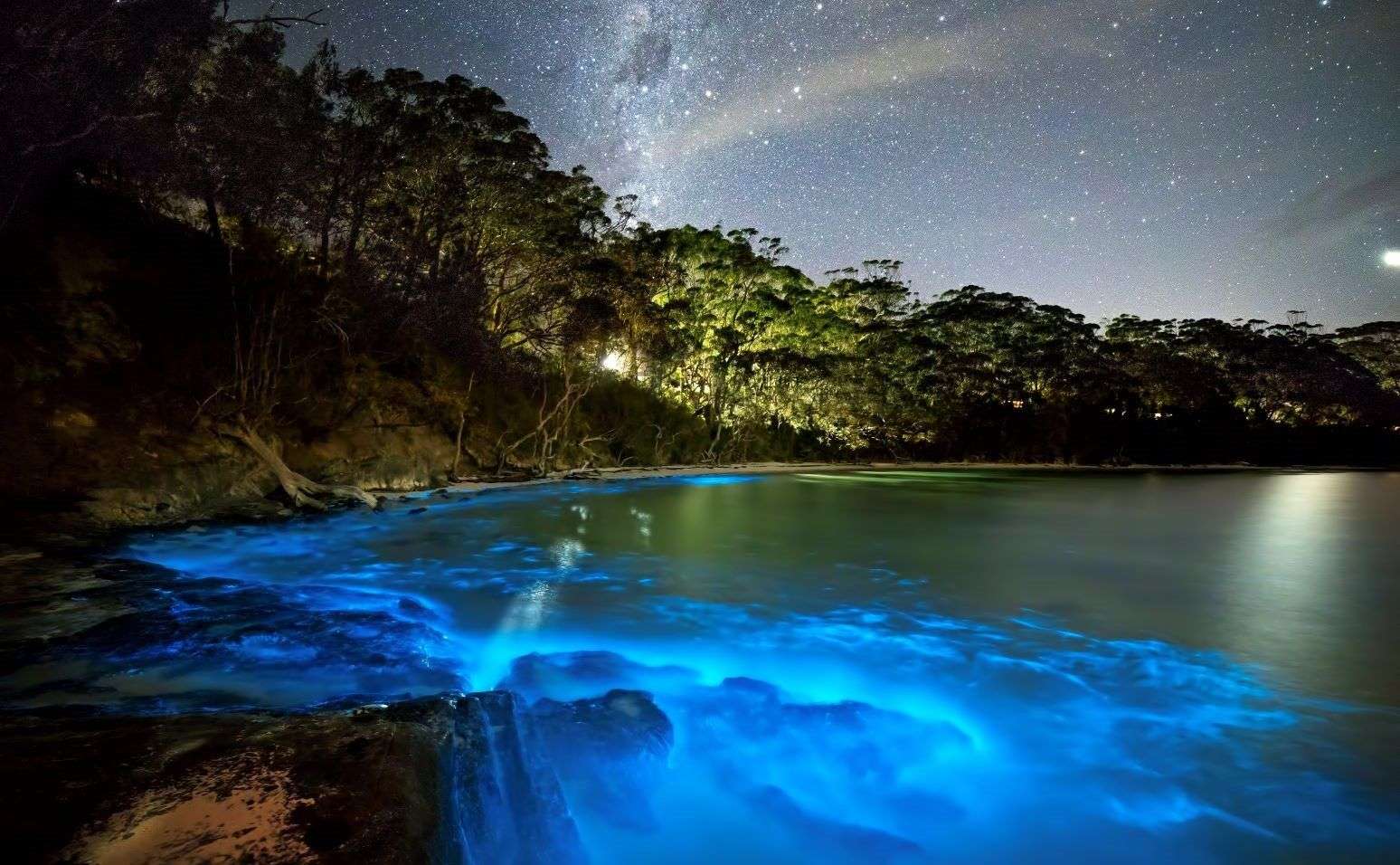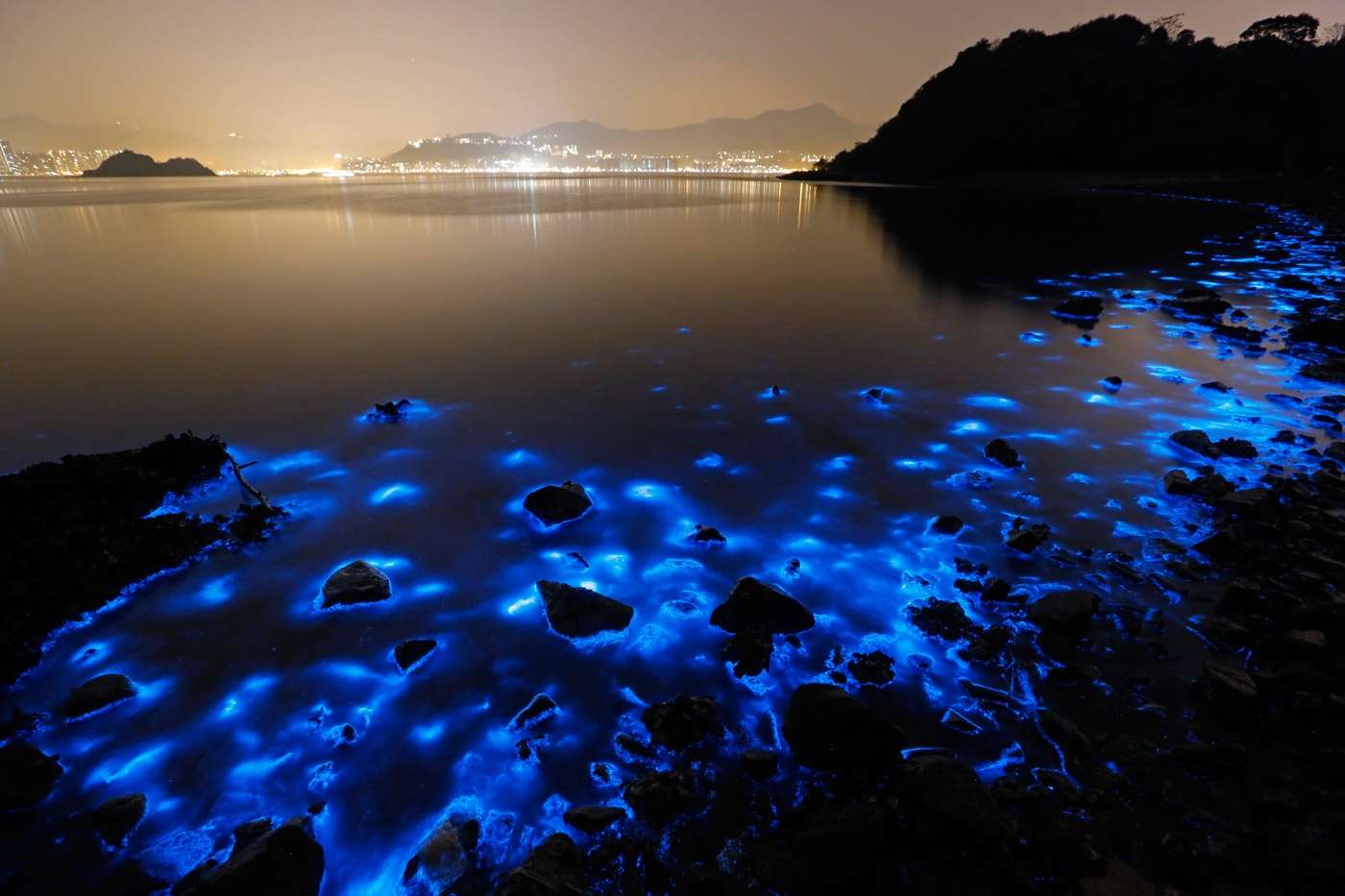Top Destinations for Witnessing Bioluminescence

Introduction
Bioluminescence is a fascinating natural phenomenon that has captivated scientists and nature enthusiasts alike for centuries. It refers to the ability of certain organisms to produce and emit light through a chemical reaction within their bodies. This unique adaptation is found in a wide range of organisms, including bacteria, fungi, insects, fish, and even some mammals.
Where to see bioluminescence has become a popular question among travelers and adventure seekers who are eager to witness this magical display of light in person. Fortunately, there are several destinations around the world where bioluminescence can be observed in its full glory.
One of the most famous and accessible places to witness bioluminescence is Bioluminescent Bay in Puerto Rico. This bay is home to millions of microscopic organisms called dinoflagellates, which emit a bright blue glow when disturbed. Visitors can take a kayak tour at night to experience the mesmerizing spectacle of the water lighting up with every paddle stroke.

Where is bioluminescence in the US?
Some of the most impressive bioluminescence sights in the country can be found on a San Diego sea night beach at night.
Bioluminescence is a fascinating natural phenomenon that occurs when living organisms produce and emit light. It is a relatively rare occurrence, but there are several places in the United States where bioluminescence can be observed. These locations offer unique opportunities to witness this mesmerizing display of nature’s beauty.
One of the most famous destinations for bioluminescence in the US is the Mosquito Bay in Vieques, Puerto Rico. This bay is home to millions of microscopic organisms called dinoflagellates, which emit a blue-green light when disturbed.
The result is a stunning display of glowing water that has earned Mosquito Bay the title of the brightest bioluminescent bay in the world.
Another popular spot for bioluminescence is the Indian River Lagoon in Florida. This estuary is home to bioluminescent comb jellies, which emit a soft blue light when they are disturbed. Visitors can take guided kayak tours at night to witness this magical phenomenon firsthand.
The San Juan Islands in Washington state are also known for their bioluminescent displays. Here, visitors can witness the glowing trails left behind by bioluminescent plankton as they swim through the water. The best time to see this spectacle is during the summer months when the water is warmer.
California’s coastline is another great place to experience bioluminescence. Several beaches along the coast, such as Torrey Pines State Beach and Crystal Cove State Park, have been known to have bioluminescent displays. These displays are caused by dinoflagellates and can be seen as glowing waves crashing onto the shore.
Where is the best place to see bioluminescence on the ocean?
Mosquito Bay, Puerto Rico. Hidden on the southern coast of Vieques, off the east coast of mainland Puerto Rico, this narrow inlet widens into a dolphin-shaped bay of mangroves that protects the brightest occurrence of bioluminescence in the world according to Guinness World Records.
When it comes to witnessing the mesmerizing phenomenon of bioluminescence on the ocean, there are several incredible locations around the world that offer unforgettable experiences. From glowing waves to sparkling plankton, these destinations provide the perfect opportunity to witness nature’s own light show. Whether you’re a nature enthusiast or simply seeking a unique adventure, here are some of the best places to see bioluminescence on the ocean.
One of the most renowned locations for bioluminescence is the Mosquito Bay in Vieques, Puerto Rico. This bay is home to millions of microscopic organisms called dinoflagellates, which emit a blue-green light when disturbed. The bay’s calm waters and high concentration of these organisms create a stunning display of glowing waves that is truly magical to witness. Visitors can take guided kayak tours to experience this natural wonder up close and personal.
The Maldives, a tropical paradise in the Indian Ocean, is another incredible destination to witness bioluminescence. The islands’ pristine beaches and crystal-clear waters provide the perfect backdrop for this natural phenomenon.
At night, the waves light up with a beautiful blue glow, creating a surreal and romantic atmosphere. Whether you choose to take a night swim or simply relax on the beach, the bioluminescent display in the Maldives is sure to leave you in awe.
The Gippsland Lakes in Victoria, Australia, is also known for its bioluminescent displays. Here, the waters come alive with glowing plankton, creating a breathtaking spectacle. Visitors can take boat tours or go kayaking to witness the shimmering blue lights dancing beneath the surface. The Gippsland Lakes offer a unique opportunity to explore the bioluminescence in a tranquil and picturesque setting.
Where is the best place to see bioluminescent plankton?
The bioluminescence of Mosquito Bay is unparalleled. The eastern, western, and southwestern coasts of Puerto Rico are home to these bays. Dinoflagellate plankton is responsible for the bioluminescence in all three of these bays.
Bioluminescent plankton, also known as glowing plankton, are a fascinating natural phenomenon that occurs in various parts of the world. These tiny organisms emit a beautiful blue-green light when disturbed, creating a mesmerizing display in the water. If you’re wondering where the best place to see bioluminescent plankton is, there are several destinations that offer incredible opportunities to witness this magical spectacle.
One of the most famous locations to see bioluminescent plankton is in the Maldives. This tropical paradise in the Indian Ocean is home to several bioluminescent bays, where the plankton light up the water at night. The Maldives’ clear, warm waters provide the perfect conditions for these organisms to thrive, and visitors can experience the enchanting glow by taking a night-time boat tour or even swimming in the bioluminescent waters.
The islands of Puerto Rico are another fantastic destination to witness bioluminescent plankton. The island of Vieques is home to the world’s brightest bioluminescent bay, known as Mosquito Bay. The bay is home to millions of dinoflagellates, the organisms responsible for the bioluminescence, and visitors can kayak through the glowing waters to fully immerse themselves in this magical experience.
New Zealand is also renowned for its bioluminescent plankton displays. The country’s South Island is home to several locations where visitors can witness this natural phenomenon. The Marlborough Sounds, in particular, offer a unique opportunity to see bioluminescent plankton in a stunning coastal setting. Taking a night-time boat tour or kayaking through the sounds allows visitors to witness the mesmerizing glow up close.
The Maldives, Puerto Rico, and New Zealand are just a few of the many incredible destinations where you can witness the beauty of bioluminescent plankton. Whether you choose to take a boat tour, go kayaking, or simply swim in the glowing waters, experiencing this natural phenomenon is sure to leave you in awe of the wonders of the natural world.
Where can I see bioluminescence in California?
The environmental website Treehugger named San Diego one of the world’s eight best places to see bioluminescent glows. Meanwhile, north of San Francisco at Point Reyes National Seashore, Tomales Bay is a dependable spot for bioluminescence and you can go out on guided trips with Blue Waters Kayaking.
California is home to several stunning natural phenomena, and one of the most mesmerizing is bioluminescence. Bioluminescence refers to the ability of certain organisms to produce light through a chemical reaction. Visitors to California can witness this phenomenon in a number of different locations, each providing a one-of-a-kind and spectacular adventure.
One of the most popular destinations to witness bioluminescence in California is the coastline. There are several coastal beaches that attract visitors year-round for their bioluminescent displays. For example, the beaches of San Diego and La Jolla are famous for their glowing waves caused by bioluminescent plankton. These tiny organisms emit a blue-green light when disturbed, creating a magical spectacle for beachgoers.
Channel Islands National Park is another California park where you can observe bioluminescence. This group of islands off the coast of Southern California is home to a diverse range of marine life, including bioluminescent organisms. Visitors can take a boat or kayak tour to explore the waters surrounding the islands and witness the stunning display of glowing organisms in the dark.
What time of year is best for bioluminescence?
Bioluminescence season can begin as early as late May or June, but the peak of the bioluminescence season is between July and September. Booking your tour during a new moon will amplify the glittering water and shimmering stars.
Bioluminescence is a fascinating natural phenomenon that occurs when living organisms produce and emit light. It manifests itself in a wide variety of organisms, from terrestrial fireflies and mushrooms to marine plankton. Many people are curious about when is the best time of year to witness bioluminescence and experience this magical display of light.
Depending on the organism and its environment, bioluminescence events may occur at different times. Bioluminescence may be a year-round phenomenon or it may occur only during certain times of the year. In the summer, when they come out to mate and have their young, fireflies are a familiar sight. Late at night throughout the summer, you may see their incredible bioluminescent displays.
In the ocean, dinoflagellates and other plankton are often associated with bioluminescence. When disturbed, these microorganisms generate light that produces a beautiful glow in the water. The timing of bioluminescent events in the ocean can vary depending on factors such as water temperature, nutrient availability, and the presence of predators. In some areas, peak bioluminescence can occur during the summer months when water temperatures are warmer and plankton populations are higher.
However, it is important to note that bioluminescence can be unpredictable and may not occur at the same time every year. Factors such as weather conditions, water quality, and other environmental factors can influence the timing and intensity of bioluminescent events. Therefore, it is always a good idea to check with local experts or tour operators who specialize in bioluminescence tours to get the most accurate and up-to-date information on when and where to witness this natural phenomenon.

What are some popular destinations to witness bioluminescence?
Some popular destinations to witness bioluminescence include:
1. Mosquito Bay, Puerto Rico: Known as the brightest bioluminescent bay in the world, Mosquito Bay offers a stunning display of bioluminescence caused by microscopic organisms called dinoflagellates. Visitors can take guided kayak tours to experience this natural phenomenon.
2. Vaadhoo Island, Maldives: This small island is famous for its glowing beach, where bioluminescent phytoplankton light up the shoreline at night. The mesmerizing blue glow creates a magical atmosphere for visitors.
3. Gippsland Lakes, Australia: The Gippsland Lakes in Victoria, Australia, are home to bioluminescent organisms called Noctiluca scintillans. These organisms emit a blue-green light, creating a beautiful spectacle in the water at night.
4. Toyama Bay, Japan: Toyama Bay is known for its firefly squid, a species that exhibits bioluminescence. Every spring, these tiny squid migrate to the bay, creating a breathtaking display of blue lights in the water.
These are just a few examples of popular destinations where you can witness bioluminescence. Each location offers a unique experience and a chance to marvel at the wonders of nature.
What are some popular destinations to witness bioluminescence?
There are several popular destinations around the world where you can witness the mesmerizing phenomenon of bioluminescence. One such destination is the Maldives, particularly the Vaadhoo Island, where the beaches light up with a stunning blue glow caused by bioluminescent phytoplankton. Another popular destination is Mosquito Bay in Puerto Rico, known as the brightest bioluminescent bay in the world. Here, the water glows with a magical blue-green light due to the presence of dinoflagellates.
New Zealand’s Waitomo Glowworm Caves is another must-visit destination for bioluminescence enthusiasts. Inside the caves, thousands of glowworms create a breathtaking display of twinkling lights on the cave ceilings, resembling a starry night sky.
Additionally, the Gippsland Lakes in Australia offer a unique opportunity to witness bioluminescence caused by Noctiluca scintillans, a type of bioluminescent algae that turns the water into a shimmering blue spectacle.
Can you recommend any guided tours or excursions that offer the opportunity to see bioluminescence?
Yes, there are several guided tours and excursions that offer the opportunity to witness bioluminescence in various destinations around the world. One popular destination is the bioluminescent bay in Puerto Rico, known as Mosquito Bay.
Here, you can take a guided kayak tour at night and experience the stunning glow of the bioluminescent organisms in the water. Another option is the Glowworm Caves in New Zealand, where you can take a boat tour and witness the mesmerizing glow of thousands of glowworms illuminating the cave walls.
In addition, you may go on a guided trip to witness bioluminescent plankton lighting up the sea as you snorkel in locations like the Maldives.
The San Juan Islands in Washington State also offer guided tours that allow you to see bioluminescent organisms in the water, such as jellyfish and comb jellies. These tours provide a unique and unforgettable experience to witness the beauty of bioluminescence up close.
Are there any precautions or safety measures to keep in mind when observing bioluminescence?
Take care to protect yourself and the species you observe when engaging in bioluminescence observation. Keep in mind that you shouldn’t touch or disturb the bioluminescent organisms in any way! Many of these animals are exceedingly delicate and susceptible to harm from human interference. It is best to observe them from a distance and avoid any physical contact.
Additionally, it is crucial to be mindful of the environment in which the bioluminescence occurs. Some bioluminescent organisms thrive in fragile ecosystems such as coral reefs or mangrove forests. It is essential to respect these habitats and avoid causing any damage.
This includes not stepping on or damaging any coral or other marine life, as well as not littering or polluting the surrounding area.
Lastly, it is important to be aware of any potential dangers or hazards that may be present when observing bioluminescence. For example, if you are planning to observe bioluminescence in the ocean, be cautious of strong currents or rough waves that could pose a risk to your safety.
It is always a good idea to check weather conditions and consult with local experts or guides who are familiar with the area.
What are some common organisms or species that exhibit bioluminescence?
Numerous creatures in a wide variety of environments show the interesting phenomena of bioluminescence. Some of the most common organisms that exhibit bioluminescence include marine species such as dinoflagellates, jellyfish, and certain species of fish.
These organisms produce light through a chemical reaction involving luciferin and luciferase enzymes. The light produced by bioluminescent organisms can vary in color and intensity, with some species emitting a blue or green glow, while others emit a yellow or red light.
The firefly is one of the most well-known examples of a bioluminescent organism. Fireflies, a type of bug found all over the world, are especially well-known for their bioluminescent abilities.
Fireflies use their glow to attract mates and carry on conversations. The larval stage of a certain kind of beetle, the glowworm is another popular bioluminescent insect. The soft green light that glowworms emit is used to lure prey, and they are typically found in caves.
Conclusion
Bioluminescence is a fascinating natural phenomenon that has captivated scientists and nature enthusiasts alike. It refers to the ability of certain organisms to produce and emit light through a chemical reaction within their bodies.
This spectacular display of light can be seen in a wide variety of organisms, from plankton in the ocean to fireflies in the night sky. If you’re wondering where to witness this enchanting spectacle, there are several destinations around the world that offer the opportunity to experience bioluminescence firsthand.
One of the most famous and popular locations to see bioluminescence is the bioluminescent bay in Puerto Rico. Known as Mosquito Bay, this bay is home to millions of microscopic organisms called dinoflagellates that emit a blue-green light when disturbed. Visitors can take a kayak tour at night to witness the bay come alive with a magical glow, creating a truly unforgettable experience.
Another incredible destination to witness bioluminescence is the Gippsland Lakes in Australia. Here, the bioluminescent organisms known as Noctiluca scintillans create a stunning display of blue light in the water. Visitors can take a boat tour or go for a swim to witness this natural phenomenon up close and personal.
For those who prefer a land-based experience, the Waitomo Glowworm Caves in New Zealand offer a unique opportunity to see bioluminescence in a cave setting. The caves are home to thousands of glowworms that emit a soft blue light, creating a magical and otherworldly atmosphere. Visitors can take a guided tour through the caves to witness this breathtaking display.
Whether you’re interested in witnessing bioluminescencein the ocean, on a lake, or in a cave, there are plenty of options available around the world.
These destinations offer a chance to witness the beauty and wonder of bioluminescence, providing a truly unforgettable experience for nature lovers and adventure seekers alike.



